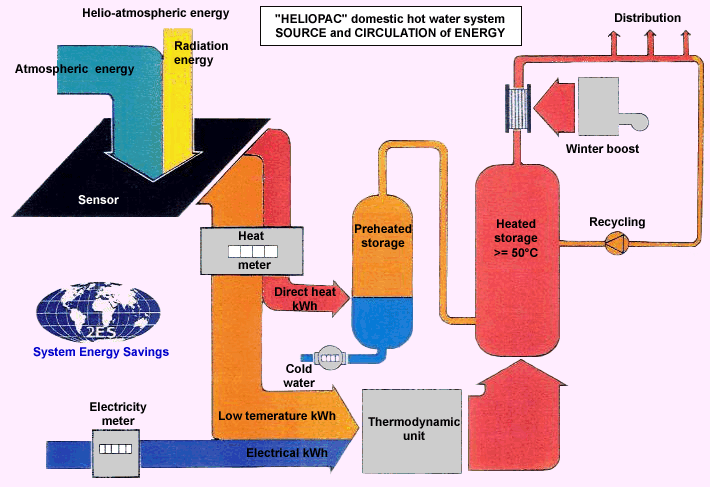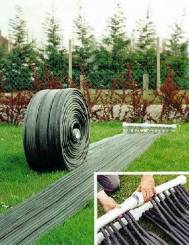
H
Heat exchanger
A device used to transfer heat from one fluid to another.
Heating degree days
The sum over a stated period of days (per month, heating season or year) of
positive values of the arithmetic difference between a base
temperature and the daily mean outdoor air temperature.
Heat flow
Heat flow is the transfer of thermal energy toward a lower temperature heat
sink. This takes place by conduction, by convection or by radiation. The heat
flow rate through a body or through space is the amount of energy passing through
in unit time, expressed in Joules/sec or Watts. The heat flux density is the
heat flow rate per unit area, and is expressed in W/m².
Heating load (kWh or MJ)
The amount of useful heat required to maintain spaces in a building at their
design temperatures over a given period.
Heat loss coefficient (W/K)
The sum of the products of U-values
and surface areas of external elements of a building, plus one third of the
number of hourly air changes times the building volume. Divided by the building's
heated floor area or volume this gives a useful comparative indicator of the
combined effect of building geometry, thermal properties and airtightness.
A mean U-value can be derived by excluding the ventilation component and dividing
the envelope heat loss rate by the total surface area of the exposed external
envelope.
Heat recovery
The process of extracting heat that would otherwise be wasted.
Heat transfer coefficient (W/(mēK))
The heat transfer coefficent encompasses all the effects that influence the convection node. It
depends on conditions in the boundary layer, which are influenced by surface geometry, the nature of the fluid
motion, and a number of the fluid thermodynamic and transport properties.
Heating season
That part of the year for which the use of conventional heating appliances is
required to maintain acceptable temperatures within a building.
HELIOPAC
The HELIOPAC system combines an unglazed solar / weather collector and a heat
pump. The collector is composed of elastomer pipes, for example unwound on the
roof, in which the heat conductor fluid circulates and is used as:

|
The system can operate like a conventional solar installation during sunny days. When there is no sun, the heat pump can be used profitably during almost all weather conditions, by recovering calories from the air or rain. The HELIOPAC system satisfies domestic hot water needs. It may also be used to heat public buildings and swimming pools, and for any application consuming a large quantity of hot water at a temperature not exceeding 65°C. |
 |
HQE (High Quality Environment) approach
The HQE approach refers to the environmental quality of a building and its ability
to preserve natural resources and to satisfy comfort, health and living quality
needs of its occupants.
The building acquires this aptitude by integrating environmental quality at each step of its existence, in other words
An environmental management system is setup to achieve environmental quality of the building in each step of its existence.
Adopting an HQE approach for a construction project also includes studying design and construction choices based on requirements summarized in form of 14 objectives:
Hybrid system
Solar air systems are often referred to as hybrid systems vs. 'passive systems'
because they use a fan to assist in moving the air from the collector to the
point of use. The system is hybrid in that it makes use of both solar energy
and electricity to power the fan.
Hypocaust
An old Roman construction in which smoke from a wood fire was circulated through
a space beneath a massive floor to provide radiant heating. Nowadays, hypocausts
refer to massive floors with channels through which solar-heated air passes,
thereby warming the floor mass and providing a delayed release of radiant heat
to the room.